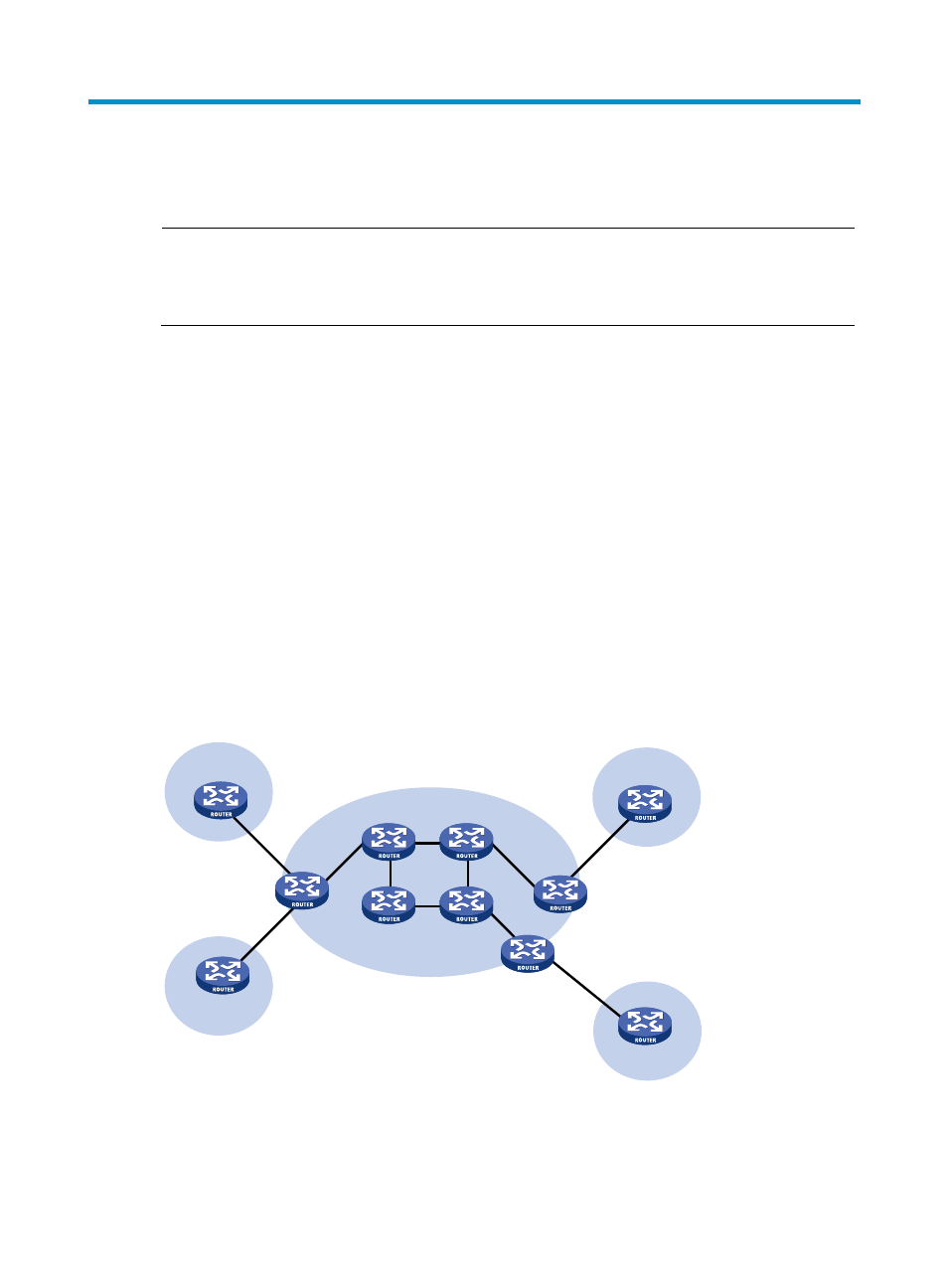Configuring mpls l3vpn, Mpls l3vpn overview – H3C Technologies H3C SR8800 User Manual
Page 233

222
Configuring MPLS L3VPN
NOTE:
This chapter covers only introduction to and configuration of MPLS L3VPN. For information about MPLS
basics, see the chapter “Configuring basic MPLS.” For information about BGP, see
Layer 3—IP Routing
Configuration Guide.
MPLS L3VPN overview
MPLS L3VPN is a PE-based L3VPN technology. It uses BGP to advertise VPN routes and uses MPLS to
forward VPN packets over service provider backbones.
MPLS L3VPN provides flexible networking modes, excellent scalability, and convenient support for MPLS
QoS and MPLS TE.
MPLS L3VPN comprises the following types of devices:
•
Customer edge (CE) device—A CE resides on a customer network and has one or more interfaces
directly connected to service provider networks. It can be a router, a switch, or a host. It can neither
“sense” the presence of any VPN nor does it need to support MPLS.
•
Provider edge (PE) device—A PE resides at the edge of a service provider network and connects
one or more CEs. On an MPLS network, all VPN services are processed on the PEs.
•
Provider (P) device—A P device is a core device on a service provider network. It is not directly
connected to any CE. It has only basic MPLS forwarding capability.
Figure 55 Network diagram for MPLS L3VPN model
CEs and PEs mark the boundary between the service providers and the customers.
VPN 1
CE
Site 1
VPN 2
CE
CE
CE
Site 3
VPN 2
PE
VPN 1
Site 2
Site 4
PE
PE
P
P
P
P